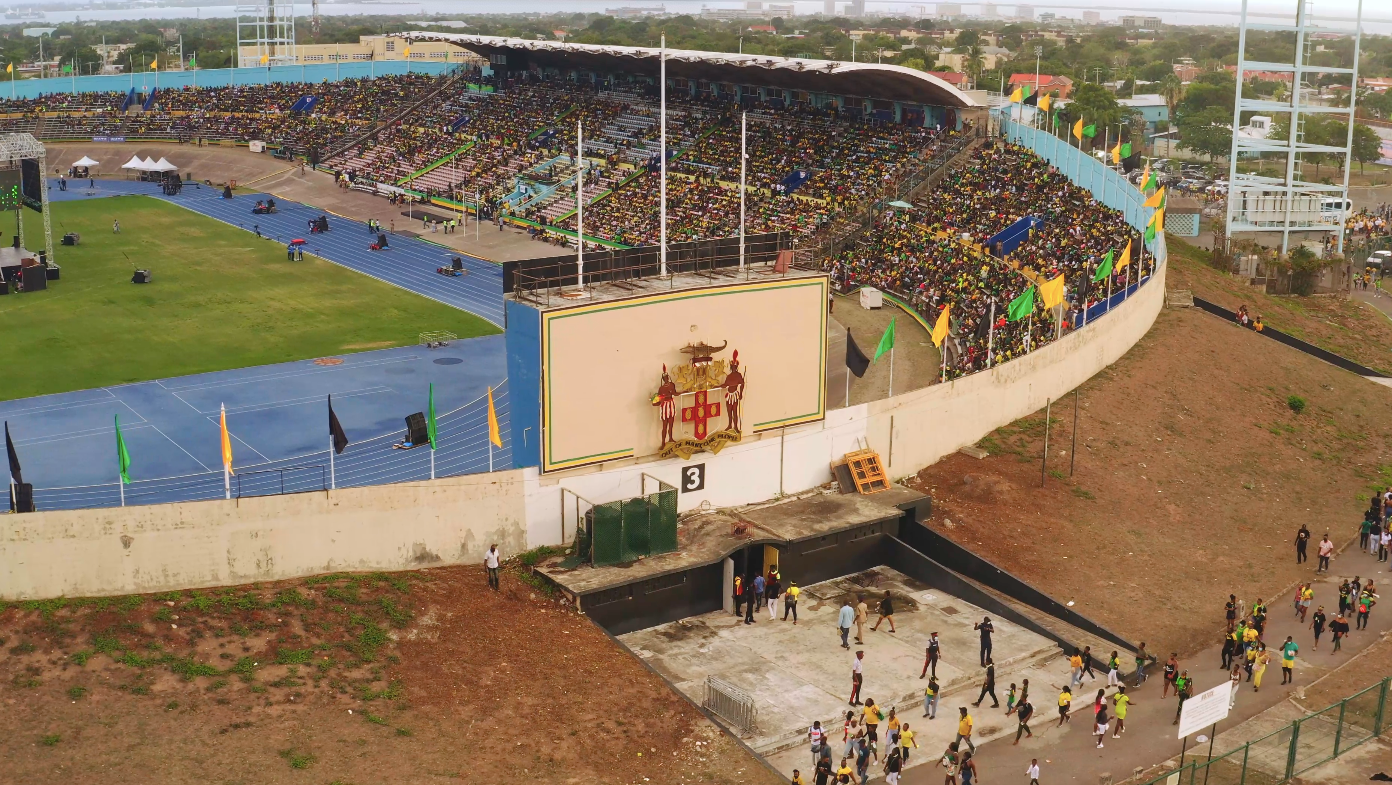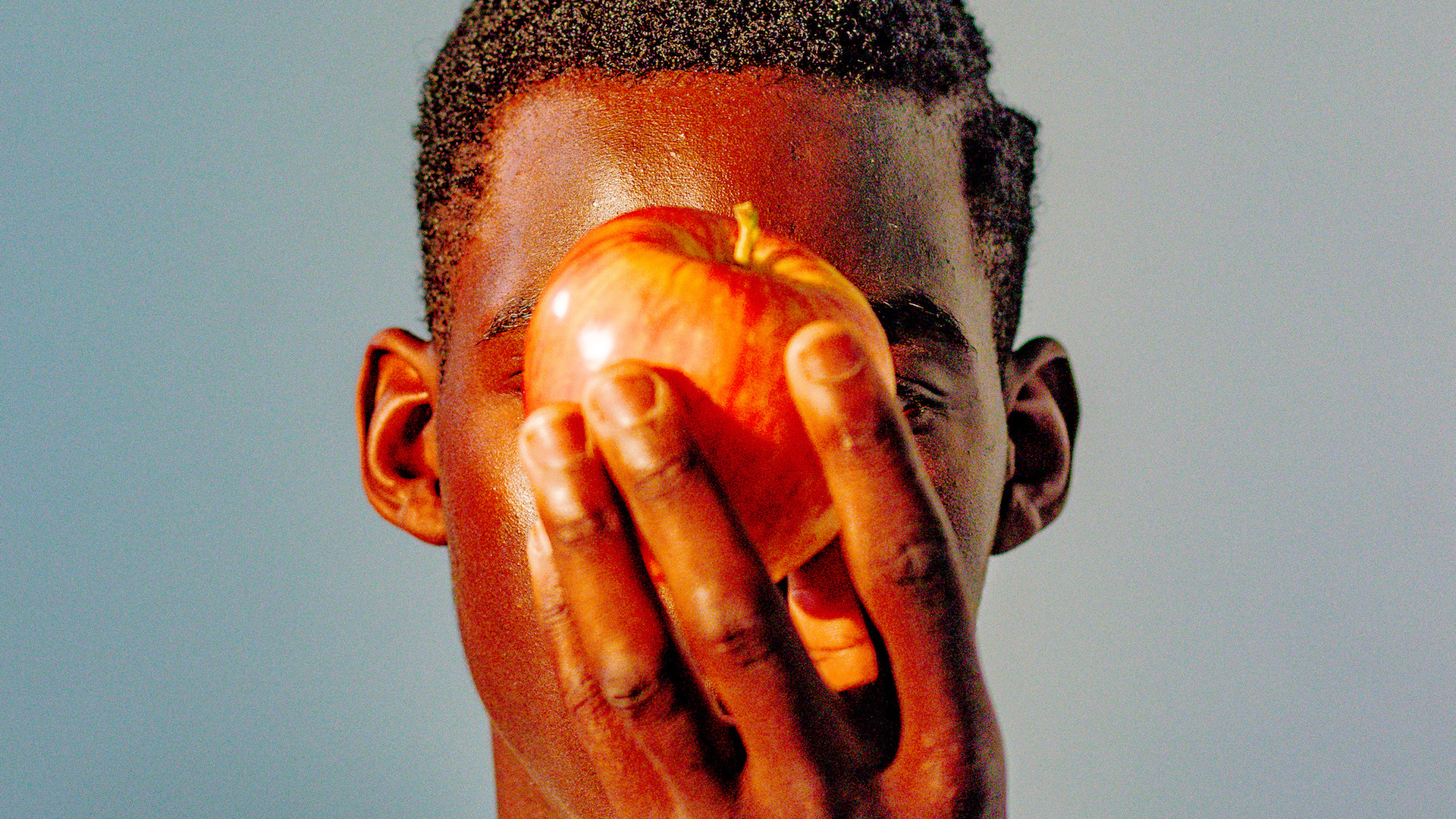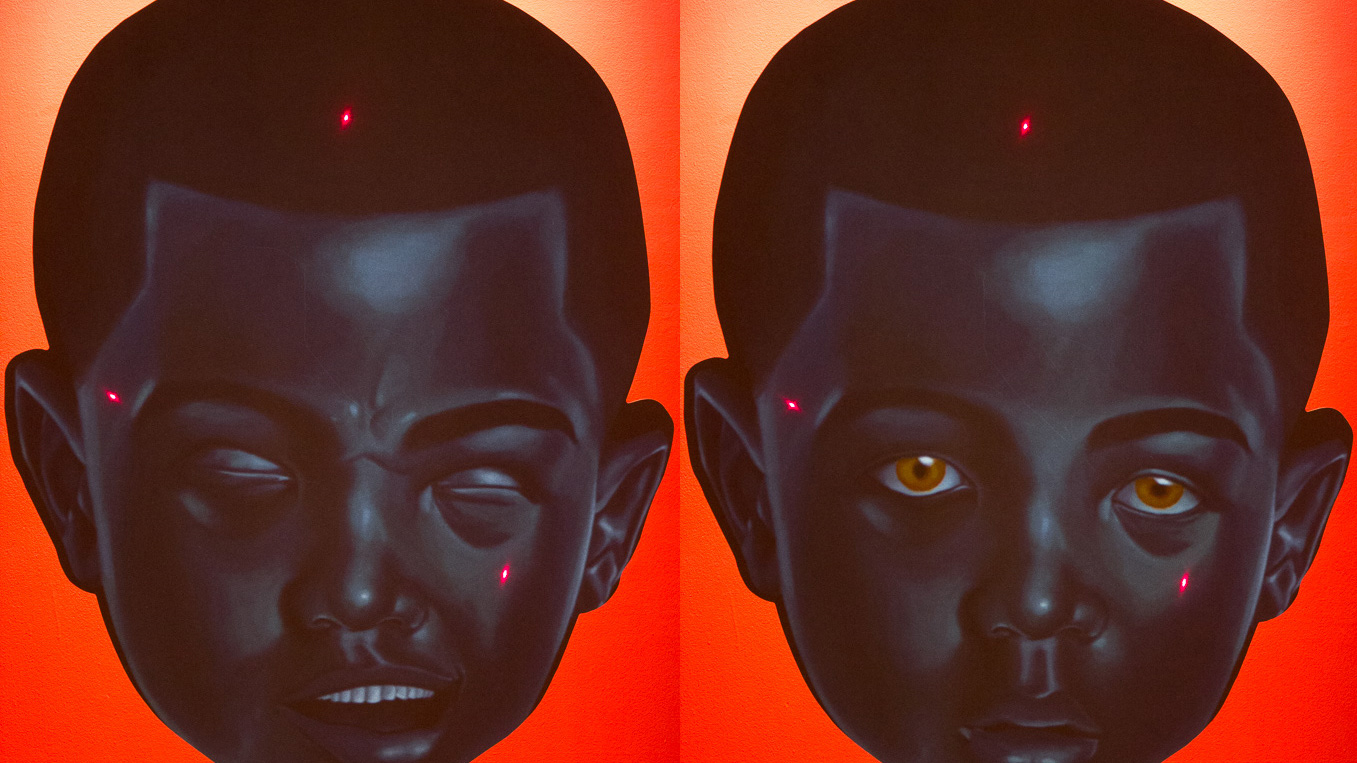The following is an article written by Kellan Whitman.
The idea of surveillance is interwoven into the images that unite to create “Untitled”. The realizations may come as a gradual flood of understanding or perhaps present themselves as the swift connecting of dots. This mural is meant to be revisited. Each viewing ignites a different question or perspective. Regardless of what rate this work’s messages set in, the poignant statements “Untitled” consists of, provides a visual voice to the experiences and the realities of Black, Indigenous, People of Color (BIPOC). Highlighting their perpetually doubted and downplayed relationship with an always watching state, comprised of police, military, and other forces fueled by white supremacy.
Unpacking this piece begins through the noticing of trends. Most clear is the presence of monitoring which is observed through the numerous imagery of cameras, eyes, and smartphones. None of these symbols are innately insidious, yet their positioning in relation to the central, red apple, Jonny is what solidifies their malevolent intent.
Artist Joshua Solas describes this piece as giving insight into the invisible war Jonny is met with. This unilateral battle against Jonny consists of perpetual scrutiny which causes him and his people to be othered and received by the general population with suspicion and distrust.
Within this piece, the viewer is given a look at the weapons used in this shrouded war. Four yellow security cameras kept in red. Bordering these cameras are a multitude of red smartphones. In yellow and sectioned off are red eyes on either side of Jonny paired with hands pointed towards him formed into the shape of firearms. From every angle, Jonny is being seen, but not for who he is, but for what he is feared to be.
There are attempts made to rationalize this persistent act of watching. Within the mural, a camera holding a smiling smartphone perhaps acts as a reminder of how monitoring is often held in a positive light and advertised as a means of protection. Yet the presence of surveillance is not what creates safe communities. Activist and educator Zellie Imani says, “Police are not a fundamental pillar for community safety. The safest communities don’t have more cops; they have more resources”
There is power in visibility, but this concept is oversimplified and in turn, gets manipulated by the state to justify and further their control. What purposefully goes unaddressed is that those doing the monitoring are not invested in the preservation of life or truly seeing the people they’re surveilling. Instead, they prioritize the maintenance of material property, the continuation of an oppressive state, and the extinguishing of hope held by those experiencing the oppression.
These understandings are supported both historically and presently by looking at how the state interacts with BIPOC. The foundations of these institutions were built and infected by white supremacy. No reformation of these systems will cure it of its inherent sickness. A way this manifests as a bias that assigns BIPOC intrinsic guilt which is then used to justify the disproportionate surveillance of their communities.
How can systems nourished by a society that has never admitted its violence in full nor provided reparations and land redistribution to the people its wronged expect their solutions to create anything other than harm? These institutions do not find value in the autonomy of BIPOC and their ability to create their own solutions. They intentionally make the problems they created worse by not investing in restorative practices. They aim to impede on the elevation of BIPOC communities by making their existence a crime in itself.
Institutions like law enforcement and child protective services maintain that their duty is to protect, but their approach toward BIPOC says otherwise. They stand with cameras on the outskirts of protests, photographing and documenting the faces of people condemning the violence they commit and won’t acknowledge. They monitor social media, banning and at times even imprisoning voices that speak out against them. They separate families, through avenues like boarding schools, racial bias in child welfare systems, incarceration, and deportation. This focus on punitive measures only exacerbates the generational trauma that comes from systemic violence and separation. Making their attempts to stunt BIPOC’s ability to advance less difficult.
Despite the burdensome weight of the state, Solas weaves radical hope into “Untitled” as well, by inviting the viewer to recognize Jonny and his peoples’ efforts of resistance, self-preservation, and resourcefulness. One example of this is observed in the presence of phones within the mural. Phones and social media, which can contribute to surveillance, also have the capacity to create connections, foster solidarity, and strengthen communities. Additionally, they provide BIPOC with more opportunities to manage their narratives without the influence of the corrupt institutions whose goal is to distort them. These tools give BIPOC the ability to document their experiences, often in real time, through written words or through video and audio recordings, in ways that were not possible when technology was less advanced. This at times can act as proof. Granting deserved legitimacy to the experiences BIPOC have with a corrupt system that works to maintain what novelist Chimamanda Ngozi Adichie refers to as a single story narrative.
In spite of the war that Jonny faces, arguably the most compelling component to this piece can be found through reflecting on the running figures that circle Jonny. In red, around these figures are cars which illustrate the unfair advantage oppressors maintain. It is much easier to reach a destination quickly via car as opposed to on foot. Even so, the symbolism of running speaks on the resilient and persistent nature of the spirit of BIPOC and their movements. Within each generation, there have been collectives consisting of people honoring themselves and their ancestors by emphatically sharing their truths and histories. Similarly to the figures running around Jonny, BIPOC in the face of adversity, have together maintained a momentum. This communal exclaiming of hope has resonated through many lifetimes, giving energy to those running towards the fruition of the more beautiful world they’ve been imagining and steadily creating.












